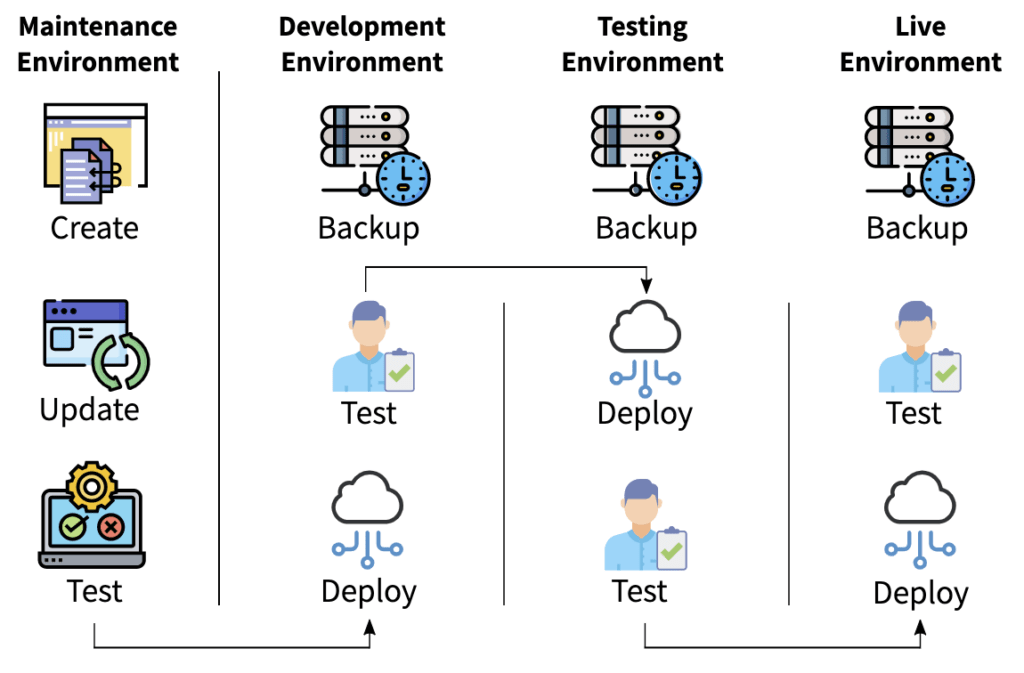In part 1 of this series, I covered the reasons why website development can seem so expensive.
In part 2, I showed you a website design project that went wrong, where it went wrong, and how it was ultimately salvaged and made profitable.
Now, in this final post, let’s go back in time to the beginning of the project and reset things with both the caterer and the first designer partnering to take a more ideal approach to this situation.
What Should a Website Redesign Process Look Like?
Caterer: “I need a beautiful-looking website for my catering business.”
Designer: “What do you think the website needs to do for you? What are your business goals?”
Caterer: “I need more customers. I want people to request estimates via the website.”
Designer: “Great. What kinds of leads will pay the bills as well as make you profitable on each sale?”
Caterer: “You know, I really hadn’t thought about it that way because I’ve typically focused on weddings and small gatherings. But what would really grow my bottom line is catering for large corporate events.”
Designer: “Exactly my thought. I was reading an article online that said the economic upturn has resulted in lots more large corporate events in this area. In terms of dollars, what would a single event like that be worth?”
Caterer: “I have a friend in another nearby city who is pulling down at least $10,000 in profit per corporate event. I think that’s a good figure to start with.”
Designer: “Yes, that sounds about right from my reading on the topic. What are your competitors doing in this space?”
Caterer: “There are one or two that seem to offer such services, but it’s really hard to get a quote from them because a customer has to call and wait to hear back.”
Designer: “So, do you think that having something like a customized estimation process that can deliver an instant quote would be a competitive advantage?”
Caterer: “Oh, yes! Definitely! Can you do that? Is it hard to do?”
Designer: “It’s hard to do, yes, but I can definitely do that for you. Let’s also talk about how you’ll let people know you have that capability. Do you do any advertising?”
Caterer: “Mainly by word of mouth. I also have MailChimp and I’ve boosted a few Facebook ads. But I don’t really know whether I’m doing it right and, to be honest, I haven’t had the time to really dig into that.”
Designer: “No problem. We can do that for you also through enhanced SEO and digital marketing efforts. Here’s a link to our process and portfolio of success stories. What about eCommerce? Do you have any plans to sell anything online for delivery or pickup?”
Caterer: “Yes, but I was thinking that would have to be way down the road because that seems really complicated. Do you think it can be done for a reasonable cost?”
Designer: “I think it could really complement your corporate catering gigs to be able to advertise delivery and take-out to the employees who enjoy the food at the event. Displaying your website and that they can order lunches through you would result in some repeat business.”
Caterer: “I like the way you think! Let’s do that!”
Designer: “Great. I’ll pull together a list of to-dos, contact you for clarifications if I need them, come visit your location, and then I’ll put together and present an estimate and proposal in person.”

Gone are the days of clicking “Update” and hoping for the best. Let Webidextrous manage your maintenance. We’ll give you back your time and peace of mind.
The End Result of a Successful Website Redesign
A few days pass, and a few more clarifying discussions ensue, with the end result being a proposal both the designer and the client are happy with. Even though the designer has submitted a proposal for $10,000 to build the website, plus another $1,500 for monthly digital marketing and SEO work, the client decides to take out a business loan to enhance her investment power for the website because she is confident that the new website will pay for itself in at least two corporate catering gigs.
A couple of months pass and the website launches complete with a custom estimation form that provides a solid dollar figure and an instant purchase option. Corporate event coordinators are finding the site in search results and subscribing to a newsletter and to the blog. They find the ordering process to be simple and elegant and have no problem paying online because of the convenience of using their high-limit corporate credit cards. The client recovers her investment in the website in just two large event sales.
The Web Designer’s Point of View
Looking at it from the designer’s point of view, here’s what we see behind those curtains.
- The designer is ecstatic to be building a website that the client actually wants and that he knows is going to be successful. It’s much better than building a site the client might hate and that won’t convert visitors into paying customers.
- The designer’s morale and quality of life improves. He is getting paid well, so he can afford to a) pay rent and other expenses b) hire great subcontractors who do quality work and c) be able to get more work done more quickly so he can spend time with his family.
- Because he’s being paid well and has more time, the designer is better able to create a really effective digital marketing campaign to help the client get more paying customers.
So, there you have it. The caterer loves the website, has regular leads streaming in, and sends all her friends, colleagues, and associates to the designer for their websites as well.
It’s pretty simple. Everyone needs to get out of the “cost” mindset and into the “investment” mindset when it comes to successful websites.
Rob Watson
Latest posts by Rob Watson (see all)
- SEO Learning Outline: 10+ Tips to Supercharge Your Neglected Websites - March 16, 2024
- What are session cookie hacks and why should WordPress users care? - March 8, 2024
- More effective AI: 5 ways your chatbot could be harming your business - February 17, 2024
- 2023 WordPress Maintenance: Critical Issues in Security and Performance - December 4, 2023
- Why Maintenance Matters: How WordPress 6.4 and cURL Broke Sites - November 9, 2023


Well worth the time to read all 3 of your posts Rob. Envision a future that’s not only better than now, but much better than now.
Thanks! Yes, it’s time for bootstrapping entrepreneurs and C-suite types alike to understand more about how websites contribute to ROI just as much as physical and financial assets.